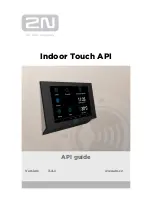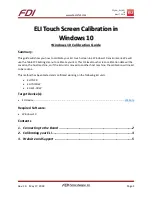
www.canadiansolar.com
| 9
· The mounting design must be certified by a
registered professional engineer. The mounting
design and procedures must comply with local
codes and requirements from all relevant
authorities.
· Canadian Solar Inc. does not provide mounting
hardware.
· Standard modules can be mounted onto a support
structure using one of several approved methods.
One such method is described below. For details of
other mounting methods and the methods
recommended by Canadian Solar Inc. for special
module ranges, please refer to our Installation
Manual Annex (Section Annex A: Alternative
Mounting Methods) on our website (www.
canadiansolar.com). For information about
other installation hardware, please contact your
local representative. Failure to use a recognized
installation method will void the Canadian Solar
Inc. warranty.
· Use appropriate corrosion-proof fastening materi-
als. All mounting hardware (bolts, spring washers,
flat washers, nuts) should be stainless steel.
· Use a torque wrench for installation.
·
Do not
drill additional holes or modify the module
frame. Doing so will void the warranty.
· Standard modules can be installed in either
landscape or portrait orientations. Refer to the
detailed instructions for further guidance. Please
note that in areas with heavy snowfall (> 2400
Pa) further countermeasures such as the use of
additional support bars should be considered to
avoid snow loads damaging the lowest row of
modules.
· In cases where an additional support bar is
recommended to improve both mechanical
stability and long-term module performance,
Canadian Solar recommends selecting
sufficiently resistant material. Canadian Solar Inc.
recommends bars with a minimum thickness of 50
mm (1.97 in). The support bar centerline should
be positioned within 100 mm (3.94 in) of the side
frame centerline (slight shifts may be necessary to
access module grounding holes).
6.1
MOUNTING METHOD: BOLTING
· The mounting method has been qualified by
Canadian Solar Inc. and certified by VDE. Modules
should be bolted to support structures through the
mounting holes in the rear frame flanges only.
· Each module must be securely fastened at a
minimum of 4 points on two opposite sides M6X1-
Grade8.8 (1/4”-20 Grade B7) bolt and nut are used
for bolting method (exception: M8X1.25-Grade8.8
(5/16”-18 Grade B7) bolt and nut are used for CS6U
and CS6K series modules). Tightening torques
should be within 6~12 Nm (4.4-8.9 ft-lbs) and
17~23 Nm (12.5~17.0 ft-lbs) respectively for M6
(1/4”-20) and M8 (5/16”-18) coarse thread bolts,
depending on bolt class. In areas with heavy
wind loads, additional mounting points should
be used. The system designer and the installer
are responsible for calculating the load and
ensuring that the support structure meets the
requirements.
The loads described in this manual corresponds
to test loads. For calculating the equivalent
maximum authorized design loads, a safety factor
of 1.5 should be applied as per IEC61215-2 and
UL1703 standards. Project design loads depend on
construction, applicable standards, location and
local climate. Determination of the design loads
is the responsibility of the racking suppliers or
professional engineers. For detailed information,
please follow local structural code or contact your
professional structural engineer.
Mounting method: Bolting
· Modules should be bolted at the following hole
locations depending on the configuration and load:
Bolt
Frame
and Rail
Nut
Spring
Washer
Plain
Washer
Plain
Washer





























